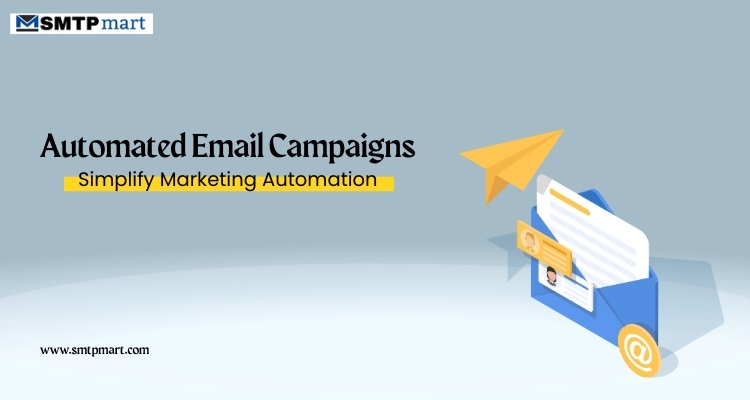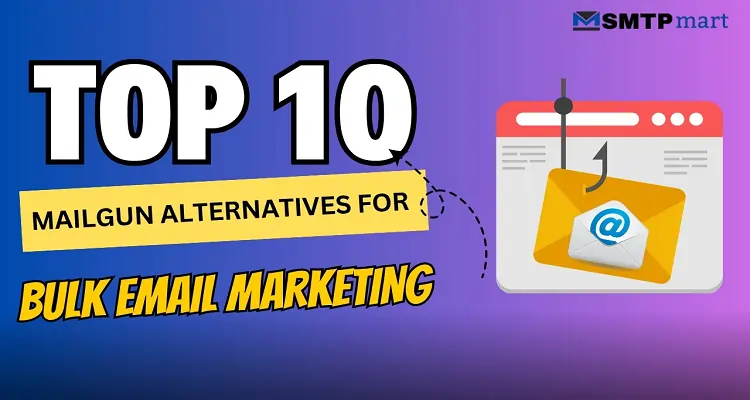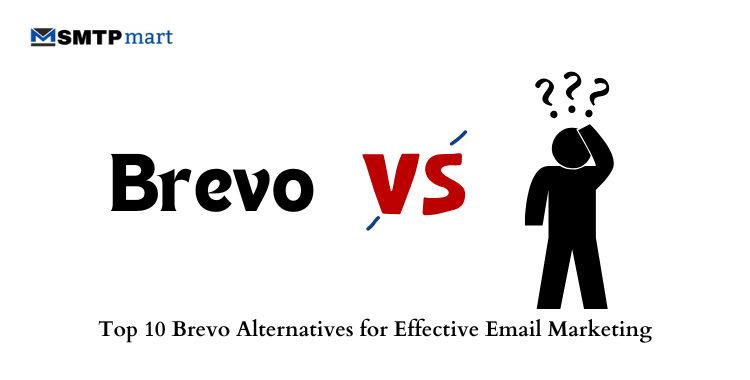Businesses always look for smart ways to reach more customers, keep them interested, and increase sales. One very helpful and easy-to-use tool is automated email campaigns. These are emails that are sent to people automatically based on their actions or a schedule. For example, if someone signs up on a website, they can get a welcome email right away. If they leave items in their shopping cart, they might get a reminder email later.
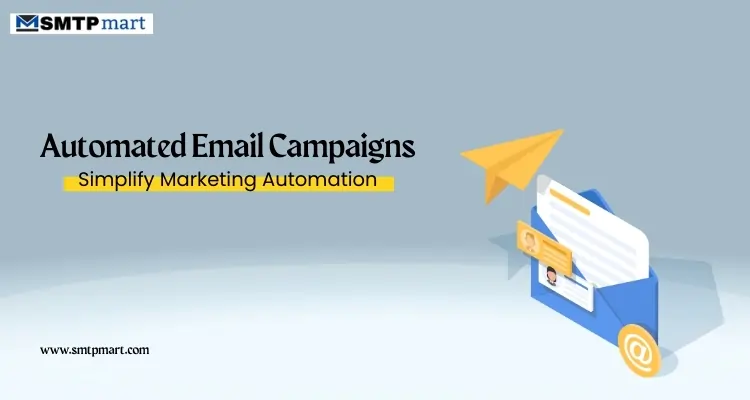
Automated emails save time and help businesses stay in touch with customers without doing everything by hand. They can be used to share news, offer discounts, or say thank you. These emails also help build strong relationships because they feel personal and timely.
In short, automated email campaigns are a smart and simple way for businesses to talk to their customers, keep them interested, and sell more products or services.
What Are Automated Email Campaigns?
Automated email campaigns are emails that are sent automatically based on a person’s actions or a set schedule. This means you don’t have to send each email one by one. For example, if someone signs up on your website, they can get a welcome email right away. If they leave items in their shopping cart without buying them, they can get a reminder email.
These emails are set up in advance using rules or steps called workflows. The goal is to send the right message to the right person at the right time. Businesses use automated emails to stay in touch with their customers and help them take the next step, like making a purchase or coming back to the website.
Some common automated emails include welcome messages, thank-you notes, birthday greetings, and follow-ups after a sale. This saves time and helps build better relationships with customers.
Pricing-
| Pricing | Cheapest plan | Premium Plan | Cluster Plan |
| SMTP Server Services | $97 / month | $153/ month | $342/ month |
| Bulk Email Services | $25 / month | $150/ month | $350/ month |
Why Use Automated Email Campaigns?
The benefits of automated email campaigns are extensive:
- Saves Time: You don’t have to send emails one by one. The system does it for you.
- Works Automatically: Once set up, emails go out on their own based on customer actions.
- Personal Messages: Emails can include the customer’s name or show products they like.
- Keeps Your Brand Consistent: All emails look and sound the same, matching your brand.
- Handles Many People at Once: You can send emails to thousands of people with no extra effort.
- More People Open and Click: Because emails are well-timed and relevant, more people read them and take action.
- Helps Increase Sales: Good emails can lead to more people buying your products or signing up.
- Easy to Manage: Modern tools make it simple to create and run these email campaigns.
- Smart Responses: The system can change what email to send based on what a customer does (like clicking a link or visiting your website).
Types of Automated Email Campaigns
Here are some common types that can help you grow your business and keep your customers happy:
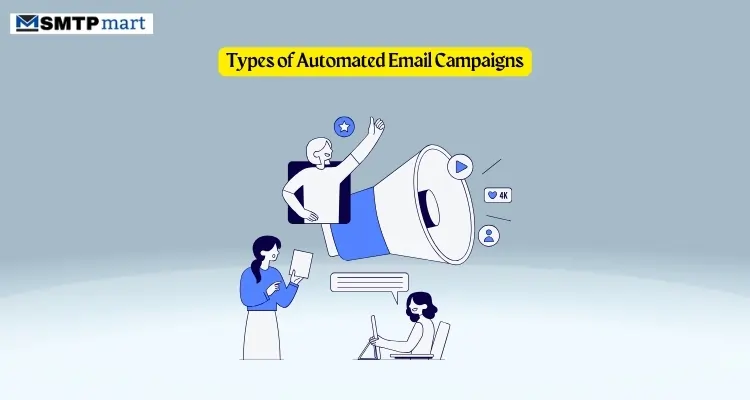
1. Welcome Emails
When someone signs up for your emails or creates an account, you can send them a friendly welcome message. This is a great way to say hello, introduce your brand, and share useful information. You can even send more than one email to explain what you offer and how they can get started.
2. Abandoned Cart Emails
Sometimes, people add items to their shopping cart but don’t buy them. You can remind them by sending an email. This type of email can encourage them to come back and finish their purchase. You can even add a small discount or free shipping to make them more interested.
3. Birthday or Anniversary Emails
Everyone likes to feel special on their big day. If you know your customer’s birthday or the day they joined your business, you can send a nice message or a special offer. It’s a simple way to show you care and keep them coming back.
4. Re-engagement Emails
Some people stop opening your emails or using your service. You can send them a message to bring them back. Offer them a deal, ask for feedback, or remind them why they signed up in the first place.
5. Transactional Emails
These are automatic emails that go out after someone buys something. They include receipts, shipping updates, or order confirmations. These emails are important because they keep the customer informed and build trust.
Key Features of Automated Email Campaign Software
Here are some key features to look for:
1. Drag-and-Drop Workflow Builder: This feature allows you to create email sequences without needing technical skills. You can drag and drop different elements, like emails and actions, into the workflow to set up automated processes. It makes building complex automation easy and quick.
2. Segmentation Tools: These tools help you divide your audience into smaller groups based on specific factors, such as their behavior, age, location, or level of engagement. By targeting the right group, you can send more relevant emails, improving your chances of getting positive responses.
3. Personalization Tokens: With this feature, you can make your email services more personal by adding details like the recipient’s name, location, or preferences. Personalization helps build a stronger connection with your audience, making them feel like the email was created just for them.
4. A/B Testing: This allows you to test different versions of your emails to see which one performs better. For example, you can test different subject lines or email content to find out what gets more opens or clicks. A/B testing helps you improve your email campaigns over time.
5. Analytics Dashboard: An analytics dashboard lets you track important metrics, such as how many people opened your email, clicked on links, or made a purchase. This data helps you understand what’s working well and what needs improvement in your email campaigns.
How to Build High-Converting Automated Email Campaigns
Building successful automated email campaigns takes careful planning and smart actions. Here’s a simple guide to help you get started:
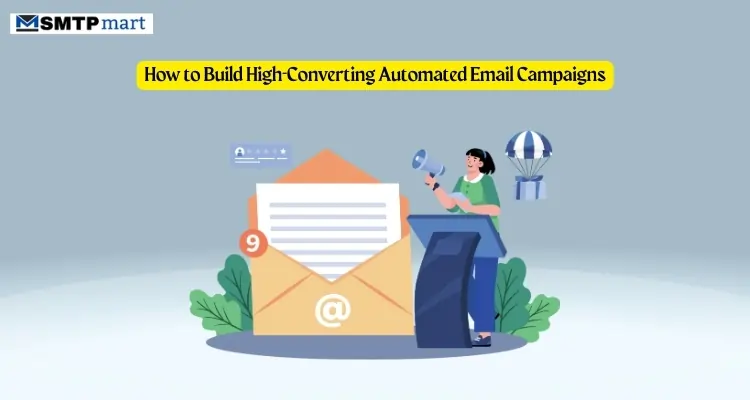
Step 1: Set Your Goals
First, decide what you want your email campaign to achieve. Do you want to increase sales, get more people to sign up for your service, keep customers engaged, or bring back old customers? Knowing your goal will help you create the right email content and strategy.
Step 2: Know Your Audience
To create emails that people want to open and read, you need to understand who they are. Use data like past behaviors, interests, and demographics to build profiles of your audience. This helps you create personalized and relevant emails.
Step 3: Pick the Right Email Tool
Choose an email automation tool that fits your needs. There are many tools out there, so pick one that works for your business size, budget, and goals. Some popular ones are Mailchimp, HubSpot, and ActiveCampaign. These tools allow you to automate your emails and track their performance.
Step 4: Write Great Content
Your emails need to grab attention right away. Start with an interesting subject line that makes people want to open the email. Inside, keep your message clear and to the point. Use a friendly tone, add visuals when needed, and always include a call to action (CTA) telling the reader what to do next.
Step 5: Set Up the Workflow
Automation allows you to set up triggers. For example, if someone signs up for your newsletter, you can automatically send them a welcome email. You can also send follow-up emails based on what actions people take.
Step 6: Test and Improve
Don’t forget to test different parts of your emails, like subject lines or CTA buttons. A/B testing helps you figure out what works best and improve your campaign’s performance.
Step 7: Measure and Adjust
Keep track of how your campaign is performing. Look at open rates, click rates, and conversions. Use this information to improve future emails and keep making your campaigns better.
Best Practices for Email Campaign Automation
Email campaign automation can help you connect with your audience more effectively and save time. To make sure your emails are successful, follow these simple best practices:
1. Keep It Simple: Don’t send too many emails. It’s important not to overwhelm your recipients with constant messages. Sending too many emails can make your audience ignore or unsubscribe from your list. Focus on sending high-quality emails that are useful and interesting.
2. Be Relevant: Make sure your emails are personal and relevant to each person. You can do this by using their name, sending them products or content that match their interests, and making the email feel like it was written just for them. This helps to build a stronger connection with your audience.
3. Timing Matters: The time you send an email can make a big difference. It’s important to send emails when your audience is most likely to open and read them. Pay attention to when your users are active, whether that’s during the day, on weekends, or at specific times. You can test at different times to see what works best.
4. Stay Compliant: Make sure your emails follow the rules, such as GDPR (for Europe) and CAN-SPAM (for the United States). These laws are there to protect the privacy of your recipients. Always include an easy way for people to unsubscribe, and make sure you have their permission before sending them marketing emails.
5. Segment Wisely: Not everyone on your email list is the same. Group your subscribers based on things like their interests, behavior, or location. This helps you send more personalized and targeted emails that are more likely to get the results you want.
Case Studies: Success with Automated Email Campaigns
Here are some case studies of automated email campaigns:
Case Study 1: eCommerce Boost
An online retail store decided to use automated emails to improve sales. They focused on sending emails to customers who had added items to their shopping cart but didn’t complete the purchase. These emails reminded customers about the items they left behind and sometimes included product recommendations based on what they had looked at. As a result of these automated emails, the retailer saw a 25% increase in their revenue. The automated system worked 24/7, reminding customers to complete their purchase, and it helped the business make more money without having to do anything extra.
Case Study 2: SaaS Onboarding
A software company that offers a subscription-based service decided to use automated email campaigns to help new customers get started. They set up a series of emails to guide customers through the software’s features, explain how to use them, and offer helpful tips. These emails were sent automatically over a few days or weeks. This automation resulted in a 40% increase in the number of people who started paying for the software after trying it out for free. The emails made the onboarding process easier and more personal, leading to more customers turning into paying users.
Case Study 3: Nonprofit Engagement
A nonprofit organization wanted to stay connected with its donors and encourage them to give again. They used automated email campaigns to send thank-you messages, updates on how donations were being used, and reminders about the impact of their gifts. Because of this, the nonprofit saw a 30% increase in repeat donations. The automated emails kept donors engaged, showing them the value of their contributions, and this led to more people giving again.
Challenges in Automated Email Campaigns and How to Overcome Them
Here are some common problems and how to solve them:
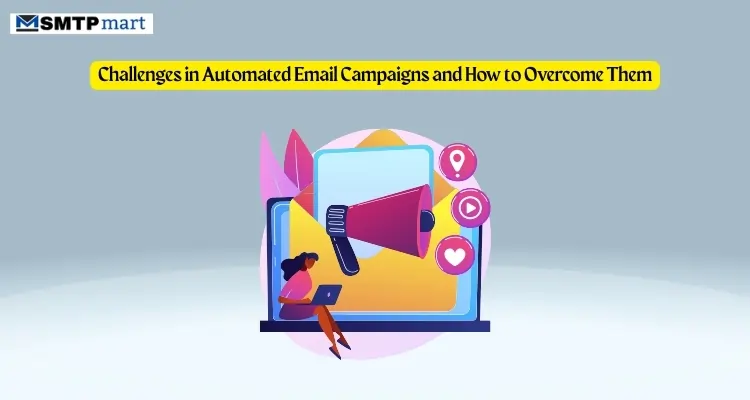
1. Low Open Rates
If your emails aren’t getting opened, it’s time to improve your subject lines and timing. The subject line is the first thing your recipients see, so it needs to grab their attention. Keep it short, clear, and interesting. Also, make sure to send emails at the right time. You can experiment to see when your audience is most likely to open your emails, whether that’s in the morning, afternoon, or evening.
2. Spam Filters
Emails sometimes get stuck in spam filters, which means your message won’t reach your audience. To avoid this, authenticate your domain. This shows email servers that your emails are legitimate and not spam. Also, stay away from using words that sound “spammy,” like “free,” “guaranteed,” or “act now.” These words often trigger spam filters, causing your emails to be marked as junk.
3. List Decay
Over time, email lists can become outdated. People change email addresses, or they lose interest in your emails. To keep your list fresh, make sure to clean it regularly by removing invalid or unengaged email addresses. This ensures that your emails reach the right people and you don’t waste resources sending messages to people who aren’t interested.
4. Complex Setup
Setting up automated email campaigns can seem complicated, but it doesn’t have to be. Most email marketing platforms offer easy-to-use templates and provide onboarding support. These resources guide you through the setup process, making it simpler to get your campaign running.
Future Trends in Automated Email Campaigns
Here are some important trends that will change how email marketing works in the future:
1. AI and Machine Learning
AI (Artificial Intelligence) and machine learning are helping marketers understand their customers better. These tools can predict what customers might want based on their past actions. For example, AI can analyze a customer’s behavior and recommend the best products or content they might be interested in. This makes the email campaigns more targeted and effective, as they send the right message to the right person at the right time.
2. Hyper-Personalization
Hyper-personalization means tailoring content specifically to each individual. It’s not just about using the customer’s name in an email anymore. With this trend, emails are customized based on a person’s interests, past behavior, or even their location. For example, a company could send an email about a sale on a product a customer has been browsing recently. This level of personalization helps build stronger relationships with customers and increases engagement.
3. Integration with Other Channels
In the future, email campaigns won’t be just about emails anymore. They will work together with other channels, like SMS, push notifications, and even social media. For instance, if a customer hasn’t opened an email, they might receive a text message or push notification with a similar offer. This helps companies reach customers in different ways and increases the chances of a successful campaign.
4. Behavioral Triggers
Behavioral triggers refer to sending emails based on a customer’s actions on a website or app. If someone adds an item to their cart but doesn’t buy it, they might get a reminder email. Real-time triggers like these make email campaigns feel more relevant and timely.
Conclusion
Automated email campaigns are no longer a luxury—they’re a necessity for any business looking to scale their digital marketing efforts efficiently. By leveraging powerful automated email campaign software, marketers can craft engaging, personalized content that resonates with their audience at every customer journey stage.
Now is the time if you’re not already investing in automated email campaigns. With the right strategies and tools, you can create the best automated email campaigns that not only drive results but also build long-term customer loyalty.
Remember, the key to successful automated email marketing campaigns lies in understanding your audience, setting clear goals, and continuously optimizing your approach. Whether you’re new to the game or looking to upgrade your efforts, effective email campaign automation can be a game-changer for your brand.
Explore, implement, and innovate—your journey toward the best email automation campaigns starts today.
Frequently Asked Questions (FAQs)
Here are some frequently asked questions about automated email campaigns:
Automated email campaigns are pre-scheduled emails sent automatically based on specific user actions or time-based triggers. They help businesses communicate efficiently and personally with their audience.
Automated email marketing campaigns improve engagement, save time, and increase ROI by sending timely, personalized messages that align with customer behavior.
The best tool depends on your business size and needs. Popular tools include SMTPmart, ActiveCampaign, and DigitalAka—all excellent options for email campaign automation.
Understand your audience, set clear goals, personalize content, use segmentation, test your emails, and continuously improve based on analytics.
Yes, most automated email campaign software provides drag-and-drop builders and templates that are user-friendly and require no coding.
Use reputable software, authenticate your domain, avoid spammy language, and always offer an easy opt-out option to keep your automated email marketing campaigns effective.
Welcome emails, abandoned cart reminders, birthday offers, re-engagement campaigns, and post-purchase follow-ups are all top-performing examples of the best email automation campaigns.
Pricing varies. Many platforms offer tiered pricing, with affordable options for small businesses and scalable plans for larger enterprises.
